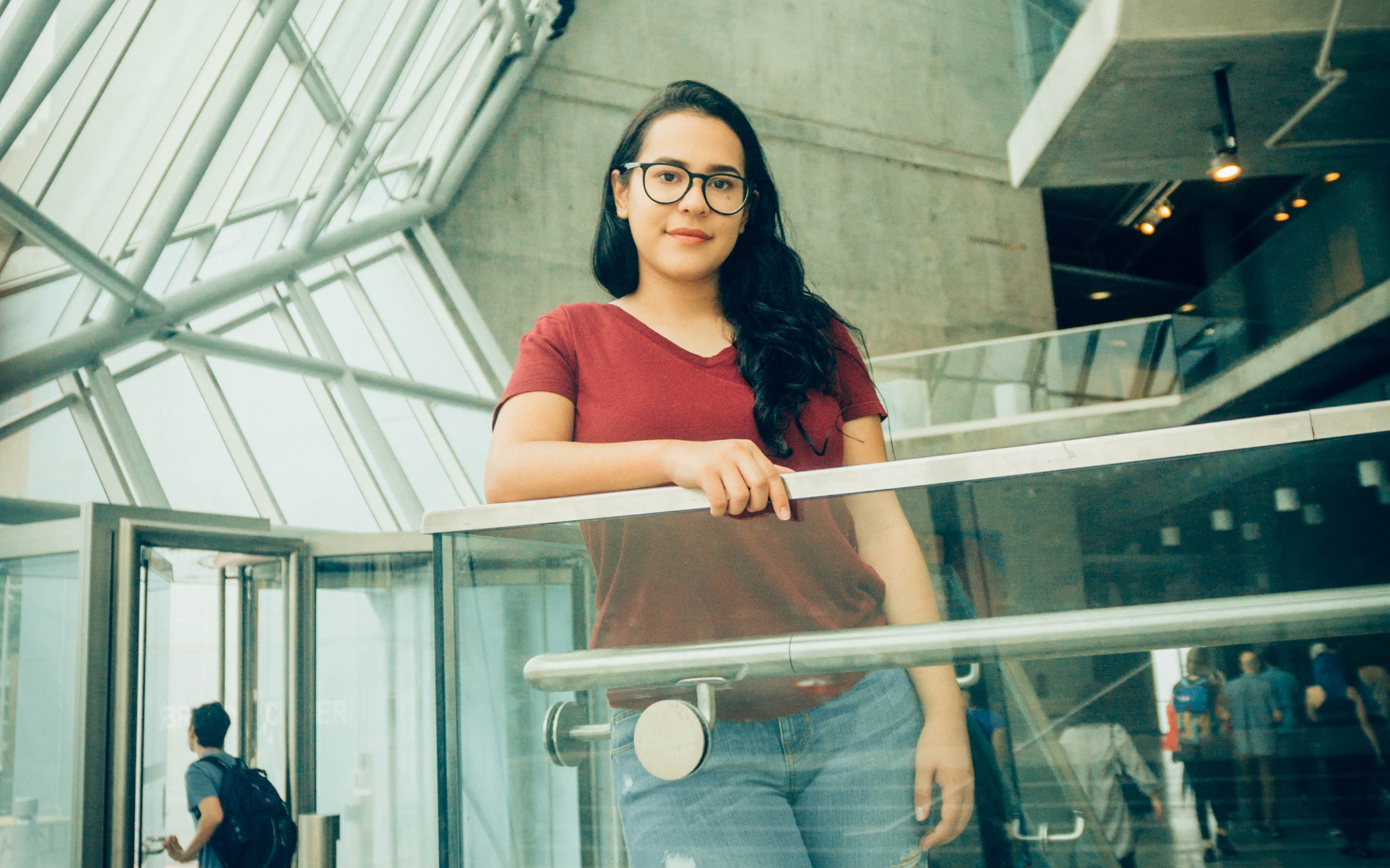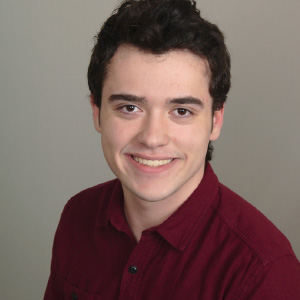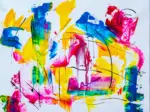A native of Miami and graduate of DASH art school, college freshman Victoria Escobar has developed a practiced eye for graphic design, collage and illustration. Her work, in many respects, defies definition.
She gravitates toward projects that involve historical or cultural examination, several of which feature an anthropological bent, such as “Teeth,” a book that, at times in an unsettlingly graphic fashion, examines depictions of orthodontia through various cultures. A recipient of an Honorable Mention award in Design Arts from the National YoungArts foundation, Escobar invites viewers to consider deep histories and explore questions of the human condition in her work.
Jack Brandon: Why are you an artist?
Victoria Escobar: I really struggle answering this question—I don’t know if that is a good thing or a bad thing. I’ve always done art. My aunt was an artist, so growing up, I would watch her paint. I was really inspired by doing small projects and enjoyed creating works that people can observe and connect to. A lot of things cannot give that same feeling. I went to Design and Architecture Senior High in Miami, and I realized that art wasn’t just a hobby. Also, I don’t like liberal arts or STEM or anything. Art is not work to me, it’s communicating in a way that isn’t with words.
JB: How did your time at DASH influence your art?
VE: DASH prepared me mentally and physically; I’ve already been staying up late nights working on projects. Talking about and thinking about my work is much easier, too. I think that when you are the only art kid at a regular high school, for example, it’s hard to transition to a place where everyone is doing art and you’re no longer the only one that made art. When we do presentations and consider a piece of work, I’m more comfortable talking about it because I have critiqued so many times before, where some of my classmates are just now getting a feel of discussing art in a group setting.
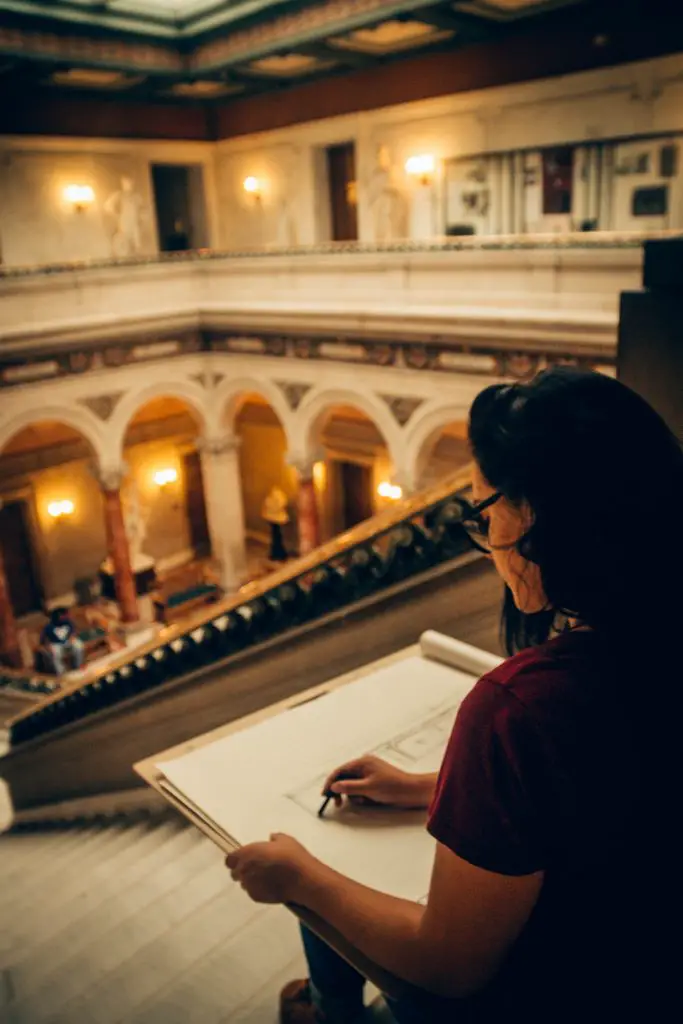
JB: What work do you most enjoy doing?
VE: I enjoy doing cultural-based work. A lot of my work starts outside of the studio, and my favorite projects are those involving a lot of thought. A few years ago, I did a series about my grandfather, who died in 1994. I interviewed a lot of my family members and other people that knew him. I documented his memories and other people’s memories in the way I imagined them.
JB: Are you mainly attracted to personal works like that?
VE: I’ve done projects that are more open. I made a book based on the anthropological study of teeth in key cultures throughout world history. I included Mayan, Japanese, Iban and a few other cultures, and each spread has the colors and depictions of abstracted forms of teeth. The book took a lot research, and I prefer research and sketchbook work rather than getting my hands dirty.
JB: Would you consider yourself an illustrator at all?
VE: I love graphic design, but I don’t consider myself an illustrator. I do, however, really enjoy putting a lot off handiwork into my graphic design and scanning stuff in and working with textures and not keeping it strictly digital.
JB: What themes are you attracted to in your work?
VE: I’m at a point right now where I’m growing out of assignment work, like being given a prompt. Right now, I’m really starting to explore my own tastes. One project, “Time,” is based on the human condition and the idea that people live in the past and don’t appreciate the moment, so I have cutouts of old movies and references to past lifestyles. Time is a pretty general topic, but the thought and research are stimulating.
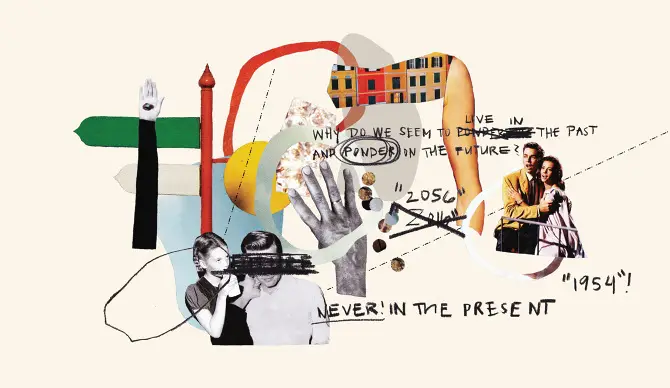
JB: What cutouts or references do you tend to select?
VE: This may be abstract, but I like to work with textures, and the old magazines, when you zoom into them, have these intricately dotted half-tone colors. I love the variety of texture between the printed material, my own handwritten phrases and some digital aspects. When I look at art, I look for visual excitement, where there are several things that your eye can find and appreciate.
JB: Do you remember any memorable responses to your work?
VE: My teeth book that one gets a lot of weird responses. Some of the imagery could be considered body horror. For the “Time” piece, people tend to view that positively because I approached that in a very authentic way. It’s important to appreciate your own work because people will notice. When you make something for yourself, you tend feel justified in what you did.
JB: What’s the best advice you have received?
VE: Coming from four years at an arts high school and being surrounded by different artists, I feel that I’ve come in with a very open mind. Other students that aren’t used to that are intimidated with showing their work and scared to receive critique. In order to improve, you have to be open to different opinions, even if you disagree with them or they make you feel worse. When you start to compare yourself to others, you stop working for yourself. If looking at your peers’ work encourages you to approach something differently, that’s fine, but you shouldn’t look at your works as less or more than anyone else’s.
JB: So authenticity is an important part of your art?
VE: It’s definitely important. I think creating art for yourself is important, and that’s where the authenticity shines. Not every piece of work has to be authentic to yourself, like I have a few pieces that are made to commemorate other artists, but I do think authenticity is key. Honesty makes you stand out. The conversations you’ll have about your work will be better, easier and more comfortable. You will talk about it differently. People know.


